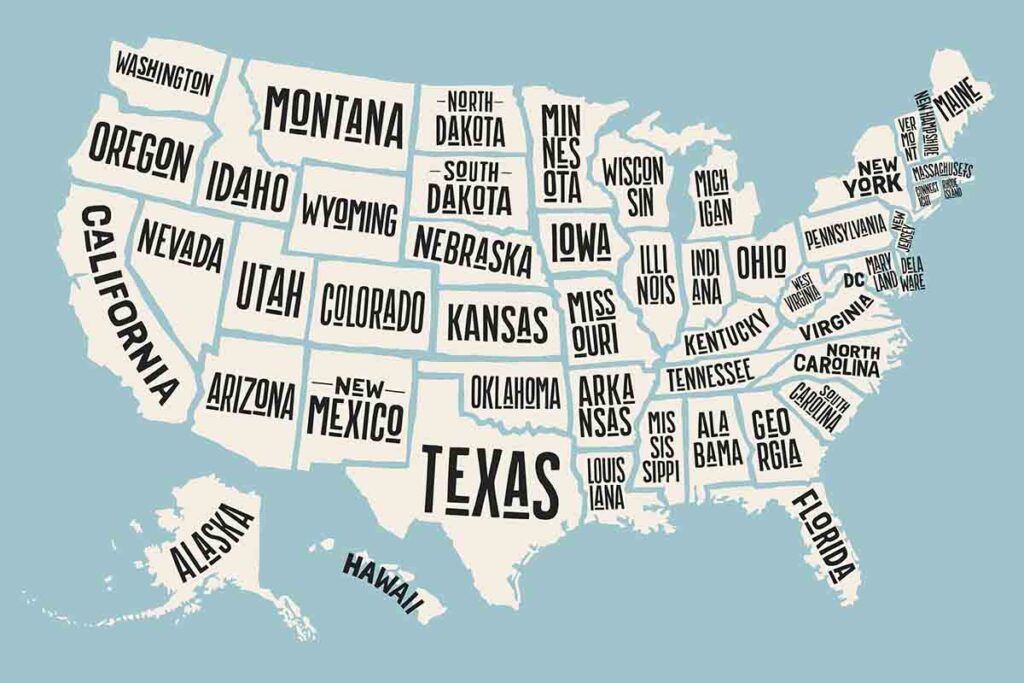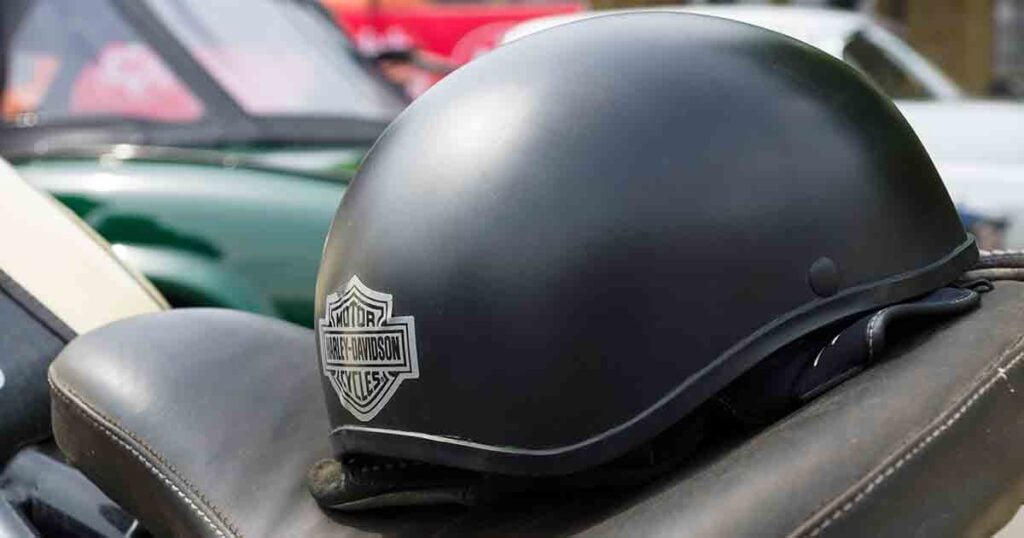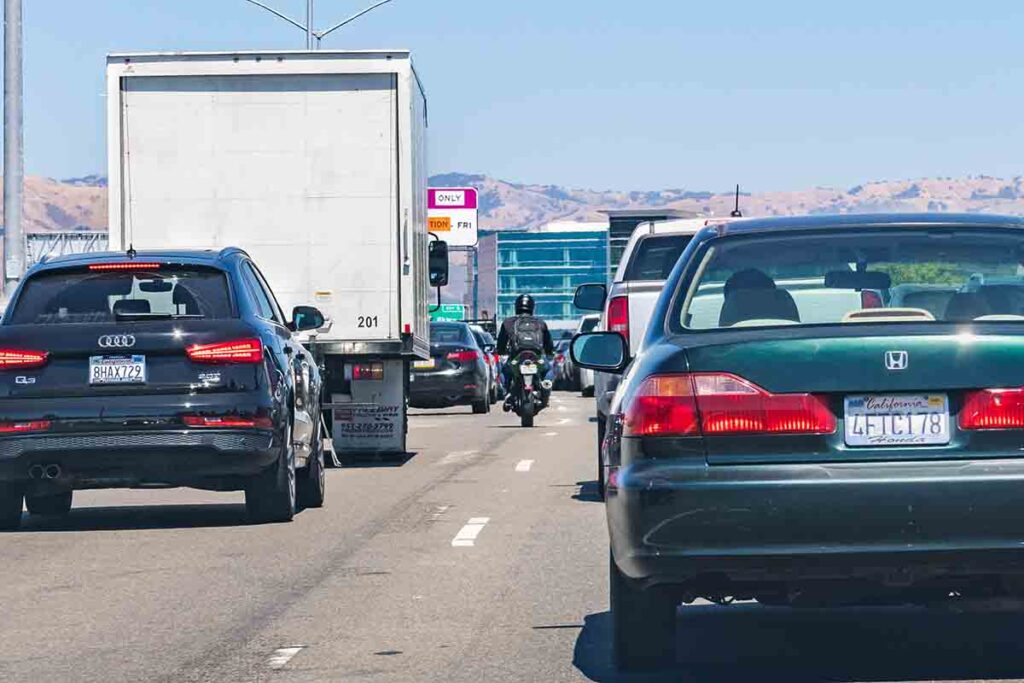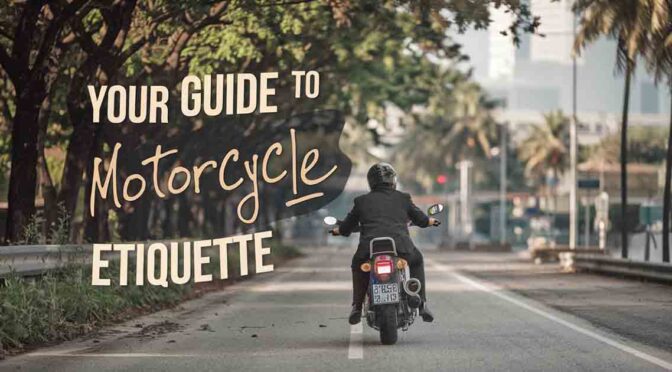Getting Started: Understanding the Basics of a Motorcycle License
Imagine the sensation of the wind whipping past you as you conquer scenic routes and bustling city streets on your motorcycle. Riding a motorcycle isn’t just a mode of transport; it’s a testament to your daring spirit and individuality. It’s about doing something that sets you apart, something that not everyone can do. However, before you can hit the open road and enjoy this unique adventure, you must obtain a motorcycle license. As the federal government continues to emphasize the importance of motorcycle safety, as highlighted in this article, it’s crucial to understand the necessary steps and requirements. This comprehensive guide will walk you through the steps required to get your motorcycle license in each state, answer key questions about costs, requirements, and safety, and provide essential tips to help you become a confident and responsible rider.
Requirements by State
Each state in the U.S. has specific requirements for obtaining a motorcycle license. Below is a general overview of what you can expect, with additional links for detailed state-specific information.
- Alabama: Must be 16 years old, pass a written test, and a skills test.
- Alaska: Requires completion of a motorcycle safety course for riders under 18, plus written and skills tests.
- Arizona: Must pass both a written and skills test, and complete a motorcycle safety course if under 18.
- Arkansas: Must be 16 years old, complete a written test, skills test, and a vision test.
- California: Requires a motorcycle training course completion if under 21, and both written and skills tests.
- Colorado: Must pass written and skills tests; under 18 requires a motorcycle safety course.
- Connecticut: Requires a motorcycle training course completion and passing a vision test.
- Delaware: Must pass both written and skills tests; under 18 requires a motorcycle safety course.
- Florida: Requires completion of the Basic RiderCourse (BRC) and passing a vision test.
- Georgia: Must pass written and skills tests, with a safety course required for riders under 18.
- Hawaii: Requires a written test, skills test, and vision test.
- Idaho: Must pass both written and skills tests; under 21 requires a motorcycle training course.
- Illinois: Requires a motorcycle safety course completion for riders under 18 and both written and skills tests.
- Indiana: Must pass a written test and skills test, with a safety course required for riders under 18.
- Iowa: Requires both written and skills tests; under 18 requires a motorcycle safety course.
- Kansas: Must pass both written and skills tests; under 18 requires a motorcycle safety course.
- Kentucky: Requires a written test and skills test, with a safety course required for riders under 18.
- Louisiana: Must pass both written and skills tests; under 18 requires a motorcycle safety course.
- Maine: Requires both written and skills tests, with a motorcycle safety course for riders under 18.
- Maryland: Must complete the Basic RiderCourse (BRC) and pass a vision test.
- Massachusetts: Requires a motorcycle safety course completion and both written and skills tests.
- Michigan: Must pass both written and skills tests; under 18 requires a motorcycle safety course.
- Minnesota: Requires both written and skills tests; under 18 requires a motorcycle safety course.
- Mississippi: Must pass both written and skills tests, with a safety course required for riders under 18.
- Missouri: Requires both written and skills tests; under 18 requires a motorcycle safety course.
- Montana: Must pass both written and skills tests; under 18 requires a motorcycle safety course.
- Nebraska: Requires both written and skills tests; under 18 requires a motorcycle safety course.
- Nevada: Must pass both written and skills tests; under 18 requires a motorcycle safety course.
- New Hampshire: Requires a motorcycle safety course completion and both written and skills tests.
- New Jersey: Must pass both written and skills tests; under 18 requires a motorcycle safety course.
- New Mexico: Requires both written and skills tests; under 18 requires a motorcycle safety course.
- New York: Must complete a motorcycle safety course and pass a vision test.
- North Carolina: Requires both written and skills tests; under 18 requires a motorcycle safety course.
- North Dakota: Must pass both written and skills tests; under 18 requires a motorcycle safety course.
- Ohio: Requires both written and skills tests; under 18 requires a motorcycle safety course.
- Oklahoma: Must pass both written and skills tests; under 18 requires a motorcycle safety course.
- Oregon: Requires a motorcycle safety course completion and both written and skills tests.
- Pennsylvania: Must pass both written and skills tests; under 18 requires a motorcycle safety course.
- Rhode Island: Requires a motorcycle safety course completion and both written and skills tests.
- South Carolina: Must pass both written and skills tests; under 18 requires a motorcycle safety course.
- South Dakota: Requires both written and skills tests; under 18 requires a motorcycle safety course.
- Tennessee: Must pass both written and skills tests; under 18 requires a motorcycle safety course.
- Texas: Requires a motorcycle safety course completion and both written and skills tests.
- Utah: Must pass both written and skills tests; under 18 requires a motorcycle safety course.
- Vermont: Requires a motorcycle safety course completion and both written and skills tests.
- Virginia: Must pass both written and skills tests; under 18 requires a motorcycle safety course.
- Washington: Requires both written and skills tests; under 18 requires a motorcycle safety course.
- West Virginia: Must pass both written and skills tests; under 18 requires a motorcycle safety course.
- Wisconsin: Requires both written and skills tests; under 18 requires a motorcycle safety course.
- Wyoming: Must pass both written and skills tests; under 18 requires a motorcycle safety course.
How Do I Get My Motorcycle License?
The process for getting a motorcycle license generally includes the following steps:
- Learn the Basics: Understand your state’s specific requirements, which often include age restrictions and necessary documentation.
- Take a Motorcycle Safety Course: Many states require completion of a Basic RiderCourse (BRC) that covers essential skills and knowledge.
- Pass Written and Skills Tests: Study your state’s motorcycle handbook to prepare for the written test, and practice riding to prepare for the skills test.
- Submit Required Documents: Provide proof of identity, residency, and completion of required courses/tests to your local DMV.
- Obtain Your License: Once you meet all requirements, you’ll receive your motorcycle license.
How Much Does It Cost to Get a Motorcycle License?
The cost of getting a motorcycle license varies by state, but you can generally expect to pay between $25 and $150. This includes fees for the written test, skills test, and license issuance. Additional costs may apply for motorcycle safety courses, which can range from $50 to $300.
| Cost Component | Average Cost (USD) |
|---|---|
| Written Test | $20[1] |
| Skills Test | $30[2] |
| License Issuance | $50[3] |
| Safety Course | $150[4] |
[1] Source: DMV.org
[2] Source: Rider Safety Course Providers
[3] Source: State DMV Websites
[4] Source: Motorcycle Safety Foundation (MSF)
Disclaimer: The costs mentioned above are approximate and can vary by state and provider. Always check with your local DMV and course providers for the most accurate and up-to-date information.
It’s important to consider these costs when planning to get your motorcycle license. The written test fee typically covers the cost of administering the exam and is usually quite affordable. However, fees can add up quickly when you factor in the skills test and the actual issuance of the license. Some states may offer a single fee that covers all components, while others may charge separately for each step of the process.
In addition to these basic costs, enrolling in a motorcycle safety course can be a valuable investment. While the cost of these courses varies, they provide essential training and can significantly improve your riding skills and safety. Many states require new riders to complete a Basic RiderCourse (BRC) as part of the licensing process, which typically includes both classroom instruction and hands-on riding practice.
Some states offer subsidies or reimbursements for motorcycle safety courses, recognizing their importance in reducing accidents and improving overall road safety. Check with your local DMV or the organization offering the course to see if you qualify for any discounts or financial assistance.
Beyond the immediate costs of obtaining a license and completing a safety course, there are additional expenses to consider. These may include purchasing appropriate riding gear, such as a helmet, gloves, and protective clothing, which are crucial for your safety. High-quality gear can be expensive, but it is a necessary investment for anyone serious about riding.
Lastly, keep in mind that some insurance companies offer discounts to riders who have completed certified safety courses. This can help offset the initial cost of the course over time through lower insurance premiums, providing both immediate and long-term financial benefits.
Overall, while the costs of getting a motorcycle license and related training can vary, they are generally manageable and represent a valuable investment in your safety and riding skills. Being prepared for these expenses and understanding their importance will help you navigate the process with confidence and ease.
How Many CC’s Require a Motorcycle License?
In most states, any motorcycle with an engine size above 50cc requires a motorcycle license. Some states have different classes of motorcycle licenses for different engine sizes, so it’s important to check your state’s specific regulations.
For example, states like California and New York have M1 and M2 licenses. An M1 license allows you to operate any two-wheeled motorcycle, while an M2 license restricts you to motorized bicycles, mopeds, and scooters with engines 50cc or smaller. These distinctions are crucial for ensuring that less experienced riders are not overpowered by high-performance motorcycles before they gain sufficient riding experience.
Additionally, some states may offer a graduated licensing program where new riders initially receive a permit or a restricted license. This permit allows them to ride under certain conditions, such as daylight hours only or no passengers, providing a safer environment to develop their skills. After gaining experience and meeting additional requirements, they can then upgrade to a full motorcycle license.
It’s important to check your state’s specific regulations regarding motorcycle licenses and engine sizes. Regulations can vary widely, and staying informed helps ensure that you comply with the law and ride safely. Your local Department of Motor Vehicles (DMV) or equivalent agency will provide detailed information on the licensing process, including any tests or courses you must complete based on the type of motorcycle you plan to ride.
Furthermore, understanding these regulations can help you make an informed decision when purchasing your first motorcycle. Opting for a bike that matches your license class and skill level is essential for your safety and compliance with state laws. Whether you start with a smaller, less powerful bike and gradually move up or jump directly to a larger motorcycle with the proper licensing, being aware of these requirements will guide your journey as a motorcyclist.
Is It Illegal to Ride a Motorcycle Without a Helmet?
Helmet laws vary by state, and understanding these differences is crucial for ensuring your safety and compliance with the law. Some states have universal helmet laws that require all riders and passengers to wear helmets, regardless of age or experience level. These states, such as California and New York, enforce strict helmet use to enhance rider safety and reduce the severity of injuries in the event of an accident.
In contrast, other states have partial helmet laws, which may only mandate helmet use for specific groups, such as riders under a certain age, novice riders, or those without adequate medical insurance. For example, in Texas, riders over the age of 21 who meet certain criteria, such as having completed a motorcycle safety course or having health insurance coverage, are exempt from wearing a helmet. Similarly, Florida law allows riders over 21 to ride without a helmet if they have at least $10,000 in medical insurance coverage for motorcycle-related injuries.
Furthermore, a few states, like Illinois and Iowa, have no helmet laws at all, leaving the decision to wear a helmet up to the individual rider. However, regardless of the legal requirements, it is widely recognized that wearing a helmet is a critical safety measure. Helmets significantly reduce the risk of head injuries in a crash, which can be life-saving. According to the National Highway Traffic Safety Administration (NHTSA), helmets are estimated to be 37% effective in preventing motorcycle fatalities.
It’s crucial to check your state’s helmet requirements and to consider wearing a helmet at all times, even if it’s not legally required. Wearing a DOT-approved helmet not only provides vital protection but also sets a responsible example for others. Additionally, some states may have specific standards for helmet design and construction, requiring helmets to meet federal safety standards. By staying informed and prioritizing safety, you can protect yourself and contribute to a culture of responsible riding.
Can Motorcycles Split Lanes?
Lane splitting, or riding between lanes of traffic, is a practice where motorcyclists move between slow-moving or stationary vehicles in the same lane. This maneuver can help motorcyclists avoid traffic congestion and reduce the risk of rear-end collisions. However, the legality and regulation of lane splitting vary significantly across the United States.
Lane Splitting in California and Utah
In California, lane splitting is explicitly legal and regulated. The California Highway Patrol (CHP) has provided guidelines for safe lane splitting, recommending that motorcyclists should only split lanes when traffic is moving at 30 mph or slower and that they should not exceed the speed of surrounding traffic by more than 10 mph. This approach aims to enhance safety for both motorcyclists and other road users.
Utah also permits a form of lane splitting known as “lane filtering.” This is allowed only on roads with speed limits of 45 mph or less and when traffic is stopped. Motorcyclists can travel between lanes at speeds no greater than 15 mph. Utah’s lane filtering law is designed to help motorcyclists avoid being rear-ended in heavy traffic and to improve overall traffic flow.
Lane Splitting in Other States
In most other states, lane splitting is either explicitly prohibited or not specifically addressed in traffic laws, which generally implies that it is illegal. States like Texas, Florida, and New York have laws that do not allow lane splitting, viewing it as a dangerous practice that can lead to accidents and road rage incidents.
States with Ambiguous Laws
Some states have ambiguous or unclear laws regarding lane splitting, meaning that while there may not be explicit prohibitions, motorcyclists could still be cited for unsafe driving. In states without clear regulations, the practice is typically discouraged by law enforcement and safety organizations and instead of being cited for splitting lanes the officer may consider it to be unsafe lane change or unsafe driving.
Safety Considerations for Lane Splitting
Regardless of legality, lane splitting requires careful consideration and adherence to safety practices:
- Speed Management: Always maintain a speed differential that is safe relative to the flow of traffic. Excessive speed differences can increase the risk of collisions.
- Awareness and Visibility: Ensure that you are visible to other drivers and constantly monitor their behavior. Look for signs that a vehicle might change lanes unexpectedly.
- Road Conditions: Only split lanes when road conditions are favorable. Avoid lane splitting on wet or uneven surfaces, as this can compromise your stability and control. The painted lines and reflectors between lanes offer far less grip than the road surface.
- Legal Compliance: Always adhere to the specific guidelines and laws of your state. Understanding and following local regulations is crucial for your safety and legal protection.
Lane splitting can be a practical solution for reducing traffic congestion and preventing rear-end collisions for motorcyclists, but it comes with significant risks and legal considerations. Always check your state’s regulations before attempting lane splitting and prioritize safe riding practices to protect yourself and others on the road. If you’re in a state where lane splitting is illegal, respect the law and explore alternative strategies for navigating heavy traffic safely.
How Long Is Motorcycle School?
A Basic Rider Course (BRC) typically lasts 2-3 days and includes classroom instruction and on-bike training. The duration may vary slightly depending on the provider and state requirements.
The exact duration of the course may vary slightly depending on the provider and specific state requirements. Some states may mandate additional hours of instruction or specific training modules to address local riding conditions and regulations. For example, states with more urban environments might place a greater emphasis on navigating city traffic, while rural states may focus more on high-speed riding and dealing with wildlife.
Upon successful completion of the BRC, riders often receive a certificate that can be used to waive the riding skills test at the DMV in many states. This certificate not only expedites the licensing process but also provides a solid foundation of skills and knowledge to help new riders stay safe on the road.
It’s essential to choose a motorcycle school that is accredited by the Motorcycle Safety Foundation (MSF) or a similar recognized body to ensure you receive quality instruction. Additionally, some insurance companies offer discounts to riders who have completed a certified motorcycle safety course, further underscoring the value of this training.
How Much Is Motorcycle Insurance?
The cost of motorcycle insurance varies widely based on factors such as the rider’s age, location, driving record, and the type of motorcycle. On average, you can expect to pay between $100 and $500 annually for basic coverage. Comprehensive coverage will cost more.
Factors Influencing Motorcycle Insurance Cost
Disclaimer: Insurance costs are subject to change and can vary based on individual circumstances and insurance providers. Always consult with an insurance professional for the most accurate and personalized quotes.
Each of these factors plays a significant role in determining your overall insurance premium. Younger riders often face higher premiums due to perceived risk, while those with a clean driving record may benefit from lower rates. Additionally, the location where the motorcycle is primarily ridden and stored can impact costs, as areas with higher traffic or theft rates may lead to increased premiums. The type of motorcycle also matters; sport bikes, for example, typically cost more to insure than cruisers due to their higher performance capabilities.
Final Thoughts: Preparing for Your Motorcycle Journey
Obtaining a motorcycle license involves understanding your state’s specific requirements, completing necessary courses and tests, and ensuring you have the right safety gear and insurance. By following this guide, you’ll be well-prepared to embark on your motorcycle journey safely and confidently. Remember to always ride responsibly and stay informed about your state’s laws and regulations. Contact MotorcycleShippers.com today to learn more about how we can help with getting your new motorcycle. We provide shipping services all over the US.
It Takes Just Seconds to Get a Quote
See our Instant Quote Form and Get A Quote Now
More Great Resources from our Team to You.
CHECKLIST FOR BUYING A USED MOTORCYCLE
SHOULD YOU TRUST CONSUMER REPORTS MOTORCYCLE RELIABILITY STUDY?
HOW TO FIND CHEAP MOTORCYCLE TRANSPORT (AND AVOID HIDDEN COSTS)
HOW TO TRANSPORT A MOTORCYCLE | GUIDE WITH COST
Posted By
Clint Lawrence, founder of Motorcycle Shippers. Helping give riders more freedom to enjoy the bikes they love.










